

– Children’s play. Changes in play, 1880s–1920s In the late 19th century children were relied on less as workers.
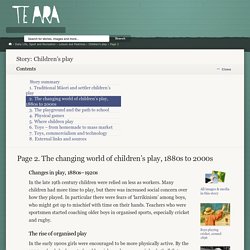
Many children had more time to play, but there was increased social concern over how they played. In particular there were fears of ‘larrikinism’ among boys, who might get up to mischief with time on their hands. Teachers who were sportsmen started coaching older boys in organised sports, especially cricket and rugby. The rise of organised play In the early 1900s girls were encouraged to be more physically active. The channelling of time and energy into sport meant many of the rougher playground games disappeared from the schoolyard, although fighting was still a common boys’ recreational activity.
Playing the time. The voyage out. Sailing ships If you were seeking a better life in New Zealand in the 19th century, you had to take a long and often dangerous voyage by sailing ship.
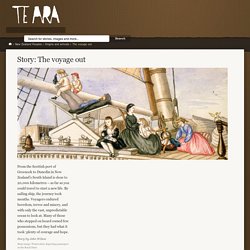
Not surprisingly, many people preferred to emigrate to the United States or Canada. The journey to New Zealand could take up to 120 days. The voyage out. Our Past - Lessons - Tes Teach. CBD scene compared with 100 years ago. Last updated 08:25 22/07/2014 Click here to view on mobile device Inner-city Christchurch has truly been knocked back in time by the earthquakes.
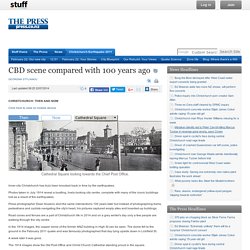
Photos taken in July 1914 reveal a bustling, lively-looking city centre, complete with many of the iconic buildings lost as a result of the earthquakes. Press photographer Dean Kozanic shot the same intersections 100 years later but instead of photographing trams, pedestrians and cyclists navigating the city's heart, his pictures captured empty sites and boarded-up buildings. Canterbury Heritage: 100 Years Ago Today 22 July 1909: Cathedral Square Gathering. Gathering in the Square At 2.30 p.m. a meeting of the unemployed was held in Cathedral Square.
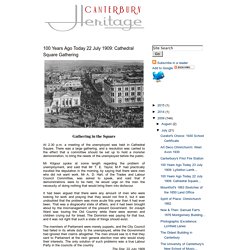
There was a large gathering, and a resolution was carried to the effect that a committee should be set up to hold a monster demonstration, to bring the needs of the unemployed before the public. Mr Kilgour spoke at some length regarding the problem of unemployment, and said that Mr T. Primary History - Victorian Britain - Toys and games. Primary History - Victorian Britain. My Place Website. Horrible Histories Victorians: Schoolchildren have unusual names. Queen Victoria workout. Rules for Teachers in 1872 & 1915: No Drinking, Smoking, or Trips to Barber Shops and Ice Cream Parlors. No one would call this the golden era of teaching, not with school budgets getting slashed, state governors routinely scoring political points at teachers’ expense, and the federal government forcing schools to teach to the test.

But if today’s teachers are feeling beleaguered, they can always look back to a set of historical “documents” for a little comfort. For decades, museums and publishers have showcased two lists — one from 1872 (above) and another from 1915 (below) — that highlight the rigorous rules and austere moral codes under which teachers once taught. You couldn’t drink or smoke. In women’s cases, you couldn’t date, marry, or frequent ice cream parlors. Victorian life. The quality of life depended on whether you were rich or poor.
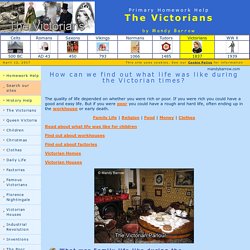
If you were rich you could have a good and easy life. But if you were poor you could have a rough and hard life, often ending up in the workhouse or early death. Family Life | Religion | Food | Money | Clothes. Victorian Fashion (PHOTOS) Victoriana Magazine. Albert Raymond (Ray) Blank 1887-1963. A classroom at Fendalton Open-Air School, Clyde Road, Christchurch : [1928] - Christchurch City Libraries Heritage Photograph Collection. A classroom at Fendalton Open-Air School, Clyde Road, Christchurch [1928] By the 1920s most parents were being guided by the Plunket Society to realise the benefits of fresh-air and sunlight for their children and the Christchurch Open-Air League had been able to persuade the Canterbury Education Board to build some open-air classrooms.
![A classroom at Fendalton Open-Air School, Clyde Road, Christchurch : [1928] - Christchurch City Libraries Heritage Photograph Collection](http://cdn.pearltrees.com/s/pic/th/christchurch-photograph-151137412)
The most common type was like this one at Fendalton School, Christchurch, where on sunny days, sliding doors allowed one whole wall to be opened to allow in fresh air and sunshine. Each pupil had a desk and chair which could be carried outside in fine weather. The porch on the right-hand side of the photograph served as a cloakroom and shelter-shed View catalogue record.
Deans Cottage – Riccarton house and bush. DEANS, William and John. Victorians Homework for kids - Woodlands. Who was King or Queen before Victoria?

The Victorians lived over one hundred and fifty years ago during the reign of Queen Victoria (1837 to 1901). Victorian times means during Victoria's rule. The time Queen Victoria was on the throne. Walk through a Victorian House. NZHistory, New Zealand history online. Early Canterbury – Canterbury region. 6. – Canterbury region. The Māori past Canterbury was first settled by Māori 600–700 years ago.

They lived mainly by the productive wetlands near the coast, and around Te Waihora (Lake Ellesmere) and Wairewa (Lake Forsyth) – renowned eel and flounder fisheries. Horomaka (Banks Peninsula) was important because it combined the resources of forest and sea. – Children’s play. – Taxis and cabs. Horse-drawn hansom cabs, which were operating in New Zealand by 1860, were the taxis of New Zealand cities in the late 19th century.
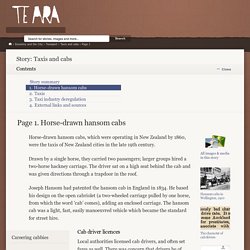
Drawn by a single horse, they carried two passengers; larger groups hired a two-horse hackney carriage. The driver sat on a high seat behind the cab and was given directions through a trapdoor in the roof. Joseph Hansom had patented the hansom cab in England in 1834. The voyage out. First Four Ships. Victorian Era Names, A Writer's Guide. Primary History - Victorian Britain. Victorian Toys & Games. Worsley, Frank Arthur. Mariner, polar explorer, naval officer, writer This biography was written by P.
Y. NZHistory, New Zealand history online. Photograph of Frank Worsley, taken by Herman John Schmidt in July 1903. RJ Hadlee Promotions Ltd - Biography. Sir Richard Hadlee. Sir Hamish led city with dignity. Last updated 00:50 09/09/2008.